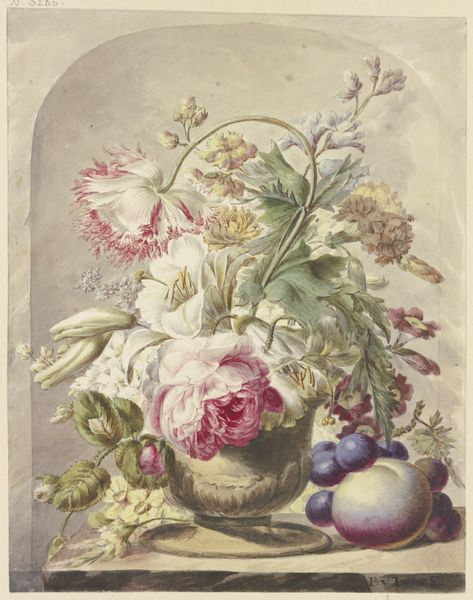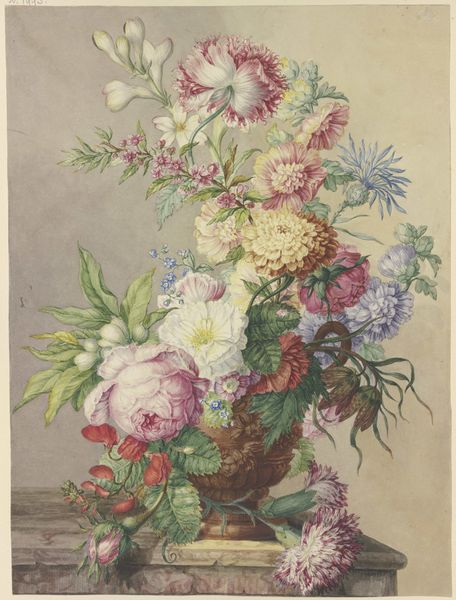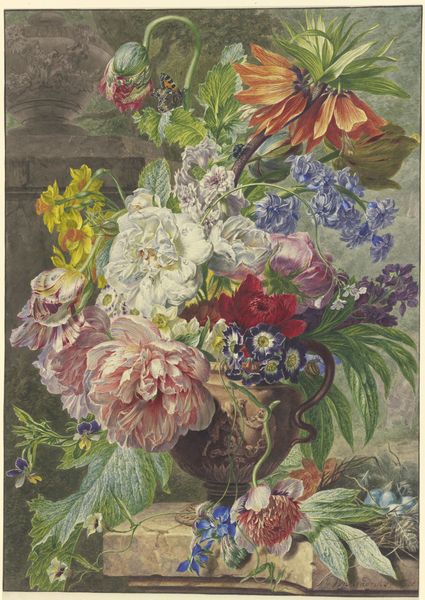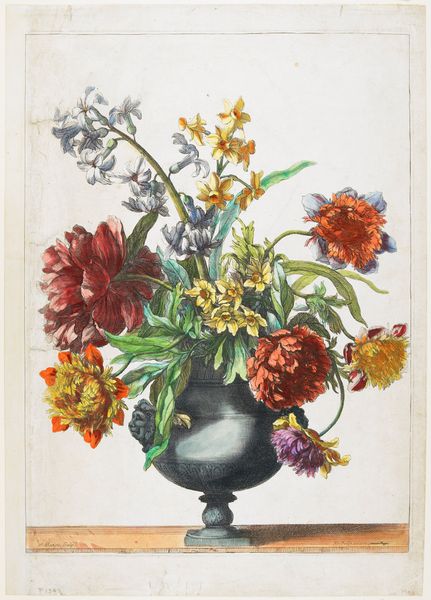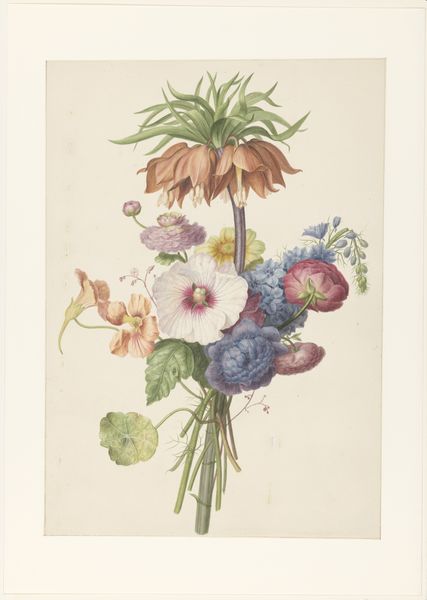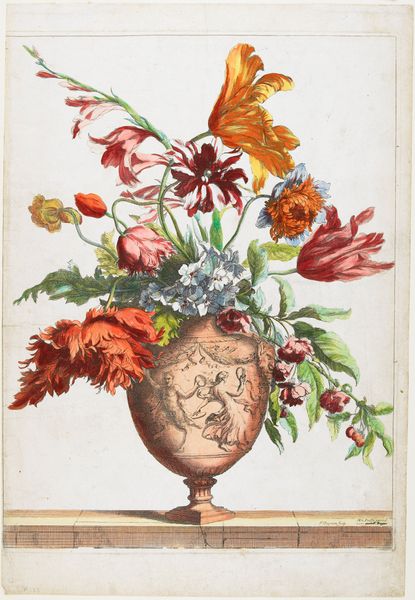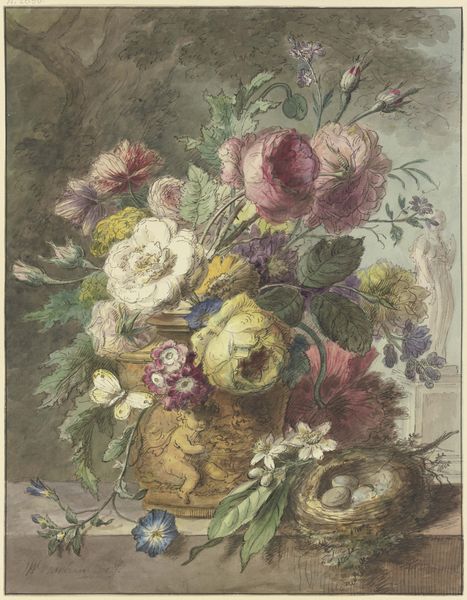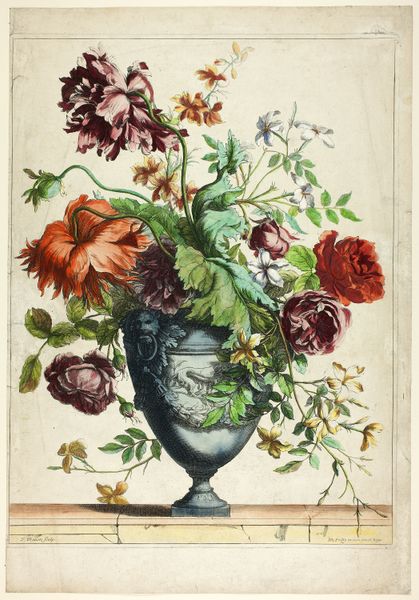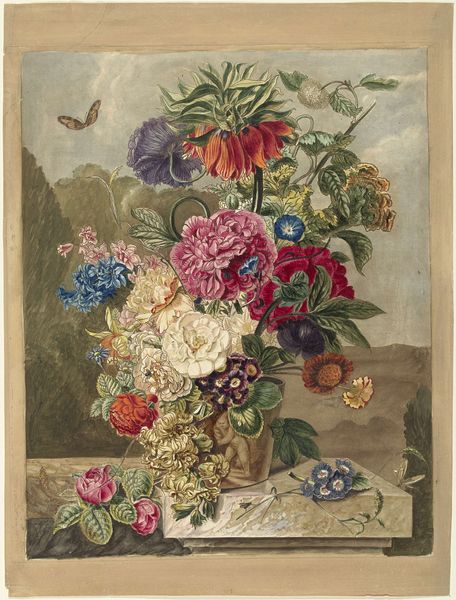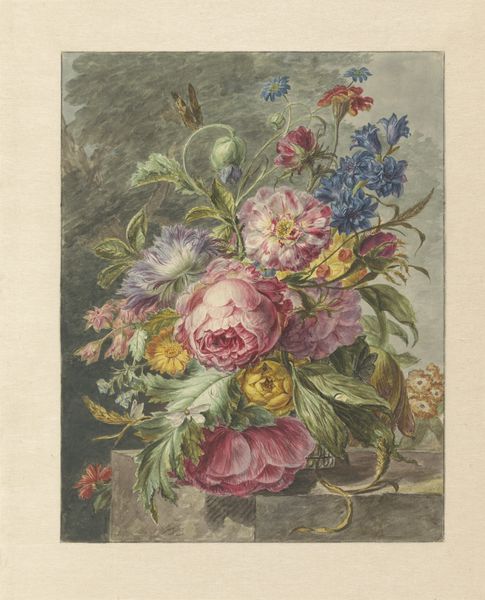
Blumenstrauß in einer Vase mit Basrelief von Mohn, Rosen, Tulpen, quer über der Vase hängt eine geknickte Nelke
0:00
0:00
drawing, watercolor
#
drawing
#
watercolor
#
15_18th-century
#
food art
#
watercolour illustration
#
botanical art
#
watercolor
Copyright: Public Domain
Editor: Here we have what's known as "Blumenstrauß in einer Vase mit Basrelief von Mohn, Rosen, Tulpen, quer über der Vase hängt eine geknickte Nelke"—or, "Bouquet in a Vase with Bas-Relief of Poppies, Roses, Tulips, with a Broken Carnation Hanging Across the Vase"— by J.H. van Loon, an 18th-century drawing in watercolour. There’s almost something melancholy about it, especially that droopy tulip and broken carnation. What do you see in it? Curator: I see a complex meditation on the passage of time and societal structures reflected in seemingly simple floral arrangements. The wilting flowers, the “broken” carnation—these were often used as vanitas symbols, alluding to the fleeting nature of life and beauty. It makes me think about what those concepts meant at a particular time for particular people. How does it strike you? Editor: That makes sense! The drooping flowers felt sad, but vanitas makes them purposeful. Does the bas-relief vase have any added significance, with figures on it? Curator: Absolutely. The classical figures on the vase place the floral arrangement within a tradition of Western art and ideas, possibly pointing towards class and wealth. Consider the intended audience for this piece: what socio-economic messages are present and who receives it? It definitely challenges our contemporary notions of still life. Editor: So, it's not *just* a pretty picture of flowers. It reflects broader issues of mortality, status, and the art world itself. I see it very differently now. Thank you! Curator: Precisely. The beauty serves as a vehicle for a deeper interrogation of historical context, its structures and impact on artists and patrons of the time. It really shows you how even still lifes are ripe with social commentary.
Comments
No comments
Be the first to comment and join the conversation on the ultimate creative platform.
